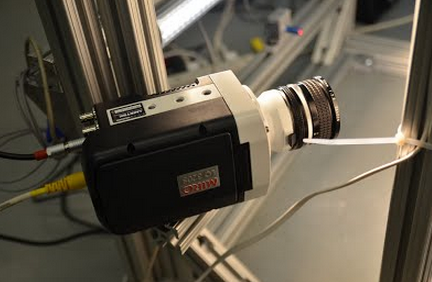The Phantom Camera is a high-speed camera when you need specs like 1920 x 1200 resolution at 1,380 fps. The Columbia Team used it in the granular flow studies. We found that the sales rep was very generous in allowing in-lab testing of a camera before deciding whether to purchase or not.
"It's becoming clear that the camera we plan to deploy in the centrifuge needs to have rather higher resolution, frame rates and sensitivity if we are to resolve granular motions in the detail we'd really like. The prosumer JVC has max 600fps and modest compressed res, while the machine vision cameras we've looked at have >mega-pixel res but not much higher max fps. So, I've started looking at Phantom cameras as a higher-speed option. They are very expensive - think around $50k each - but they can provide >>1000fps at >megapixel res. Here's an example: the Miro LC320S."
The Columbia team identified the following pros and cons and ultimately decided to use it
Pros:
1) The sensor. One of the best i've ever worked with. Amazingly fast and sensitive. Large sensel sizes (10 micron).
2) Frame rates. Up to 8,300 fps at VGA resolutions. Much faster at lower resolutions. Fast enough to study an enormous range of problems.
3) Lens flexibility. Interchangeable mount plates (F-mount, C-mount, and many others). Lens options almost unlimited provided that the image circle is >1".
4) Capture software. It's full featured, very mature, and very free
Cons:
